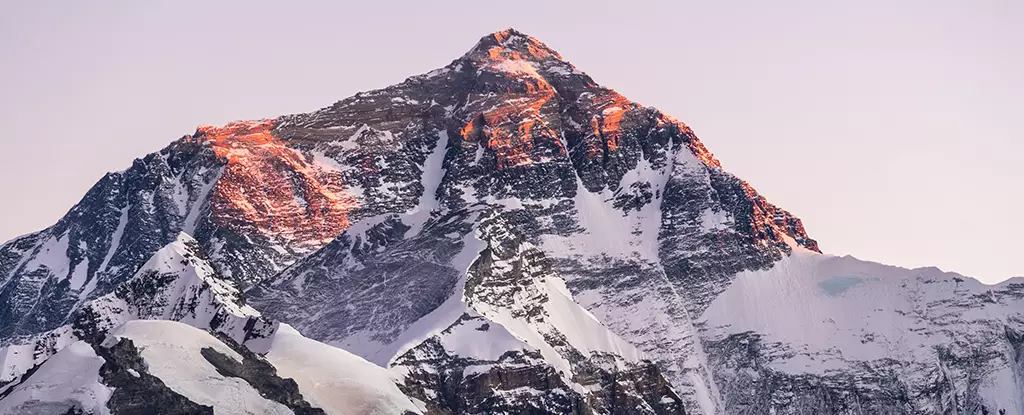The growth of the world’s highest mountains is a remarkable phenomenon, driven by forces deep beneath the Earth’s surface. While geologists have offered theories and explanations for this natural wonder, the intricacies of these mechanisms remain a subject of debate. Recently, a team of researchers from the United States and China presented a surprising revelation at the American Geophysical Union conference in San Francisco. Their analysis of new seismic data collected from southern Tibet challenges existing models and provides a fresh perspective on the tectonic activities that shape the Himalayas.
The prevailing explanations for the formation of the Tibetan plateau and the majestic Himalayan mountain range revolve around the collision between the Indian and Eurasian continental plates. One theory posits that the Indian plate dove beneath the Eurasian plate, driven by currents of molten rock within the mantle. This subduction process gradually raised the Eurasian landmass to create towering peaks over millions of years. However, the buoyancy of the Indian continental plate raises questions as to why it would sink so easily.
Another theory suggests that the Indian plate undergoes deformation, causing certain sections to wrinkle and fold while others dip and dive. The interpretation of evidence and data processing techniques shape the perspectives of geologists studying this phenomenon, leading to various hypotheses. To delve into the complexities further, a team of geophysicists from Ocean University of China led by Lin Liu embarked on an investigation using advanced seismic data.
The team collected ‘up-and-down’ S-wave and shear-wave splitting data from 94 broadband seismic stations across southern Tibet. This valuable information, combined with previously gathered ‘back-and-forth’ P-wave data, allowed them to generate a more comprehensive understanding of the dynamics beneath the Earth’s surface. The researchers discovered that the Indian slab does not simply glide beneath the Eurasian plate or bunch up like a rug on a slippery floor. Instead, it experiences a process called delamination.
Delamination involves the separation of the Indian plate, with its dense base peeling away and sinking into the mantle, while the lighter top-half continues its journey just beneath the surface. Although computer models had hinted at this possibility, the researchers’ findings provide the first empirical evidence of such an occurrence. Moreover, these observations align with geological models that rely on the limits of helium-3 enriched spring water and patterns of fractures and earthquakes near the surface.
The precise description of plate boundaries and interactions is crucial not only for understanding our planet’s surface but also for advancing methods of earthquake prediction. By unraveling the hidden dynamics beneath the Himalayas, this study offers valuable insights that can inform future research and enhance our ability to anticipate seismic activities. The researchers presented their findings at the 2023 American Geophysical Union conference, shedding light on the remarkable forces shaping Earth’s highest mountains.
This groundbreaking study challenges conventional theories and uncovers new dimensions of the tectonic processes responsible for the majestic Himalayan mountain range. The delamination of the Indian continental plate, observed for the first time, offers a fresh perspective on the complex dynamics occurring deep beneath our feet. As our understanding of these forces deepens, we inch closer to comprehending the origins of Earth’s most awe-inspiring landscapes and move towards more accurate earthquake prediction methods.

Leave a Reply